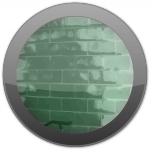Water Intrusion

What You Need to Know
Water intrusion events must be responded to as soon as possible as mold will start to grow in as little as 24-48 hours after the event started
It is important to segregate out building materials that can be dried from those that must be disposed of
Moisture mapping of impacted areas should be performed to delineate extent of affected areas
Infrared cameras and moisture meters are essential tools in characterizing an impacted area as “wet”
What You Need to Do
Shut off the water and ensure safety of occupants
Perform careful examination delineating extent of the issue and if mold is found, proceed as per mold section above
If visible mold is suspected, do not open any wall cavities or other concealed areas which might have had water impact
If mold is not present, dry down wet areas quickly exposing concealed areas, adding dehumidification, air movement, and heat (as needed)
Myths and Misconceptions
If there is water damage or staining, there will also be mold present-FALSE
Prompt response will mitigate moisture issues-TRUE
Water intrusion caused by water (other than clean water) must be handled as a potential bacterial contamination-TRUE
Expert Services:
Insurance
Claims: Prevention and Response
- Site Investigations/Inspections
- Loss Mitigation Protocol Development
- Creative Scope of Work Development
- Project Oversight
- Environmental Sampling
- Cause and Origin Investigation
- Emergency Response
- Client Interface
- Communication/Alert Development
- Liability Exposure Minimization
- Expert Consultation
Underwriting: New Product Development and Risk Assessment
- New and Emerging Risk Education-Focus on New Areas of Coverage Opportunity
- New and Emerging Product/Technology Applicability to Underwriting Coverage
- Recommendations for Coverage Expansion Based on Risk Minimization Strategies
- Policy Language Review/Development Based on Industry Specific Issues
Due Diligence: Investigation, Auditing, Verification and Risk Assessment
- Project Oversight Ensuring Compliance with Policy Coverage
- Immediate Communication re Project Issues Impacting Policies
- Detailed Reports of Project Findings/Oversight with Recommendations
- Cost Estimate Development Based on Construction/Remediation Options
- Phone Surveys/Desktop Reviews Focusing on Issues of Potential Concern
Remediation Cost Auditing and Risk Quantification
- Review/Audit of Contractor Invoices
- Scope of Work Performed Analysis (Best Practices, Regulatory Compliance)
Expert Testimony
- Environmental Risk
- Healthcare Risk
Education and Training: Claims and Underwriting
- Seminars/Webinars on Environmental/Healthcare Issues Focusing on Claims/Underwriting Risk
- Seminars/Webinars on Emerging Issues and Policy Impact as well as Coverage Expansion Opportunities
- White Paper Development
Insurance Toolkits: Claims and Underwriting
- Development of Underwriting Applications for Healthcare/Environmental Risk
- Development of Value Added Risk Management Checklists/Protocols for Insureds
- Operations and Maintenance Programs for Water Intrusion Risk Management, Asbestos, Lead Based Paint
- Hazard Assessment Critical Control Point Programs (HACCP)
Insurance Risk Alert Service
- Development of Insured Alert Communications re Emergency Healthcare/Environmental Risk
- Development of Employee Alert Communications re Emergency Healthcare/Environmental Risk

